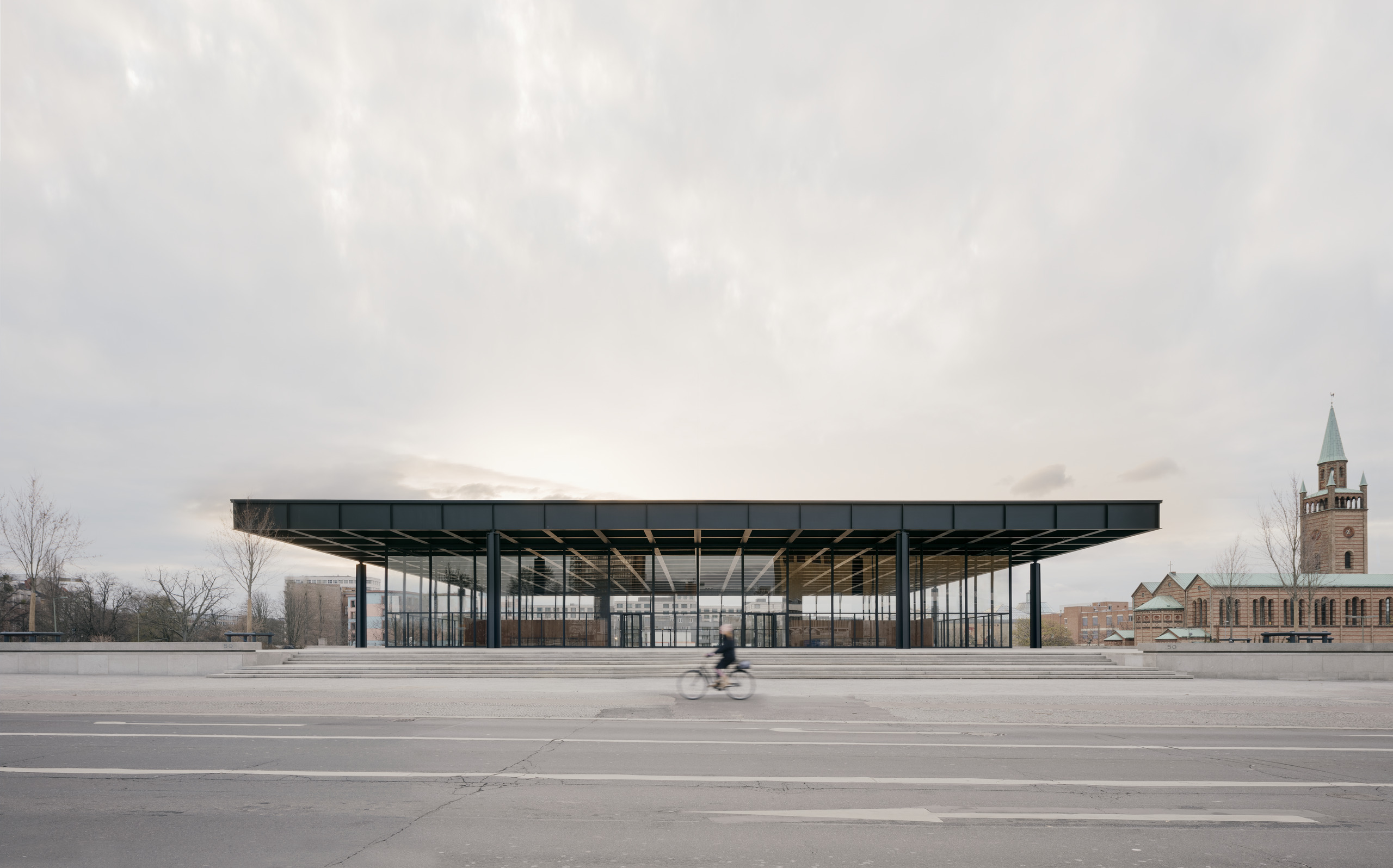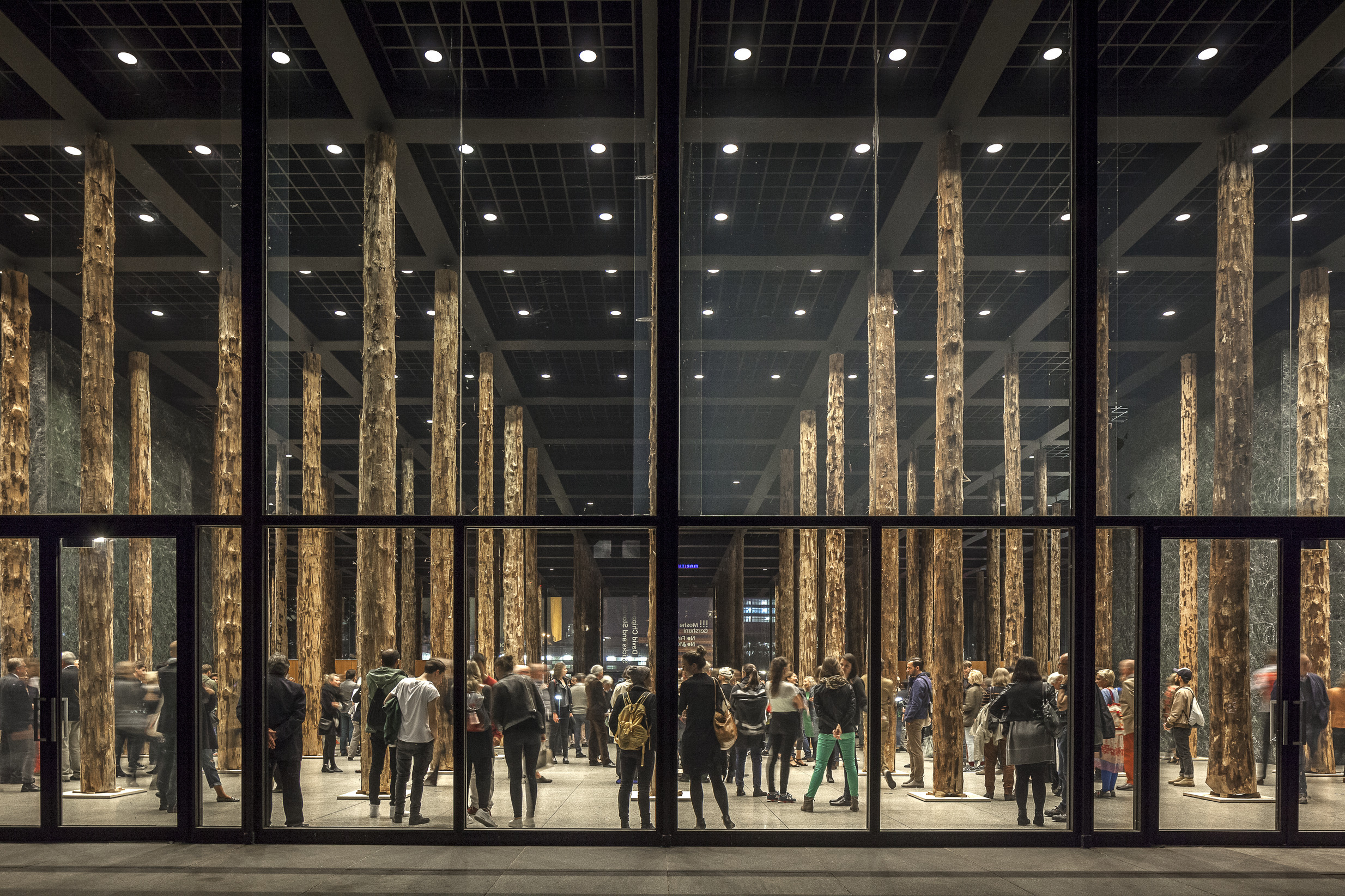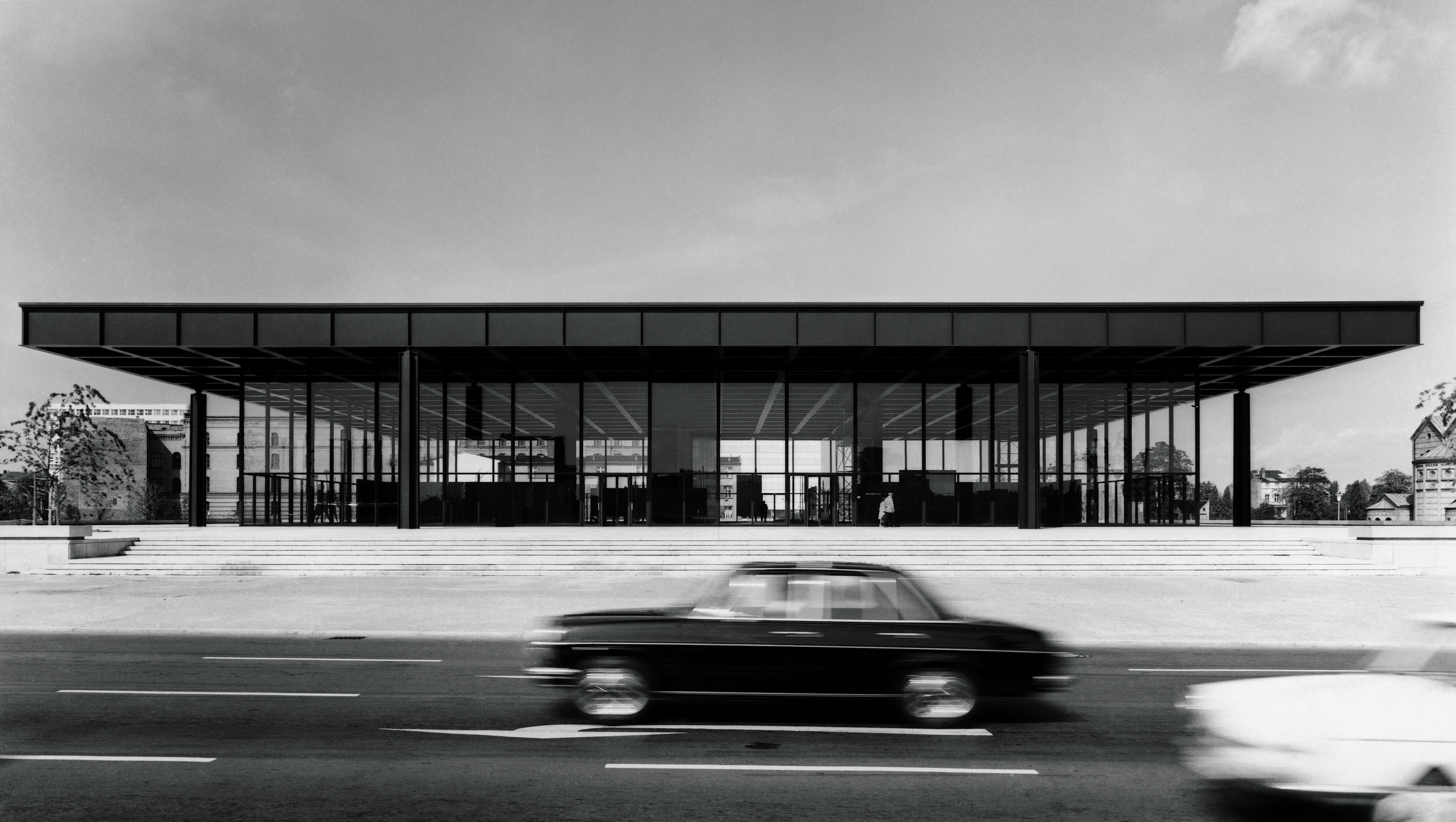A speech on the restoration project for the Neue Nationalgalerie delivered at the ‘Form versus function. Mies und das Museum’ conference held in the building before the restoration work began.
I am here to introduce our work to restore the New National Gallery of Mies van der Rohe.
The planning work has been carried out over the last two years with our planning partners under the direction of my colleagues Alexander Schwarz and Martin Reichert, and in close dialogue and collaboration with our clients the Prussian Cultural Heritage Foundation, and with the Berlin Monument Authority. This work has been coordinated by the Federal Office for Building and Regional Planning.
In January the building will close and work will begin.
In any restoration or reconstruction project there must be a clear philosophical framework within which technical and formal solutions can be developed.
The complex issues raised during repair and restoration involve the consideration of often contradictory technical and philosophical concerns: We must consider the original intentions of the architect; inherent defects in the design; the issue of weathering and damage; modifications in programme and use; and the status of any changes and alterations made to the original design. These issues must be clearly articulated and measured against one another.
In the range of interventions, that swings from repair to restoration and finally to reconstruction, this project sits comfortably towards the repair end the spectrum. The building has suffered no trauma, no fire has destroyed it; its fabric is intact and rescuable.
Having been through this process many times we endorse the saying, “better to repair than restore; better to restore than reconstruct.”
In comparison to other projects that we have worked on, the intellectual and emotional issues are quite reasonable. We don’t have to struggle with the enormous loss of material that confronted us with the Neues Museum; nor do we have to deal with the complex and contaminated history that confronts us with the Haus der Kunst in Munich; nor do we have to shift between the history of layers and modifications as with the Forum Museum Island.
The task of restoring the New National Gallery is one that concerns the skin and bones of Mies’ extraordinary building. But even this cannot be regarded from the dispassionate distance of technical solutions. Our task is not only to repair its body but to protect its soul.
In real terms our work does not require us to make any radical intrusion or alteration, but to address the relatively modest but still complicated issues that arise from the fabric of the building, and to reinstate the integrity of its structure.
We have been asked many times why, if it is our intention to be invisible, do we want to do it?
We can say of course that it is an honour; that it is a responsibility; or even that we don’t trust anyone else! We can also profess our deep appreciation for the building which is a critical component in such a task - you need to love the building. But I think in the case of the National Gallery there is something else that has motivated us: That is the possibility to consider and discuss in a coherent and intelligent environment the physical stuff of architecture.
In what we might call ‘normal practice’ the architect is often fighting for physical and material ideas that are difficult to describe and protect. The architect does this, normally isolated and with little evidence, only with promises. The architect must fight against the more obvious forces of money, time, and deliverability. It is no accident that contemporary architecture tends towards form over substance, skin over bones. The ability to carefully consider these essential elements of architecture, with others who share a belief in their importance, has been a regenerating experience.
Repairing Mies’ great utopian work puts us into a stark relationship with the elements of an architecture that asserts the importance of each physical decision. Each dimension, alignment, junction makes a contribution. The physical presence and constructive composition are readable and accessible. This is an engagement of reduced building substance and spatial composition in which the mullion, the structure, the sheet of glass are all engaged in the idea of the building. There is nothing covered, everything is what it is, an unforgiving assembly of parts to a singular idea.
A few quick observations about the functionality of the building: It is well understood and an accepted part of its story that the building doesn’t work so well, that Mies wasn’t concerned enough with function.
Most of the criticism was aimed at this great room. Conceived as a changing exhibition space, it certainly didn’t make things easy. However if we go downstairs, it is interesting that after nearly 50 years the building has been hardly changed. By this time we would expect institutions (usually not very respectful) to have made countless interventions in front of house and certainly back of house areas.
This would be one of the major tasks at this point, clearing out the modifications. But in fact there haven't been so many changes. There seems to be two main reasons: One is that, against the common idea, this was a very well worked our plan. Secondly, and I think most importantly, the planning has a clear authority and near classical simplicity that maintains a slightly loose relation to programme.
I don’t think Mies subscribed to the idea of form following function as it suggests an unrealistic precision about use. With Mies you feel that function follows good form, intelligent and clear planning and a certain lack of specificity.
My last observation returns to the criticism of the exhibition spaces. Firstly we can be bold enough to say that the downstairs galleries have no problems. They work perfectly well. Simple exhibition spaces, perhaps a bit low, but clearly organized with clear circulation and an orientation and light provided by the courtyard window - a very intelligent solution to the issue of daylight and artificial light. Returning to this room, clearly difficult and not the perfect changing exhibition space, we must understand its gesture: A room at the scale of the city. A room that mediates between the sensible internal workings of the lower museum and the complex context in which it sits.
This is the ultimate expression of Mies’ ideas of a non-specific space, defined not by function but by purpose. A space that has been adopted by the citizens of the city and by the curators and artists who have learned to work with it.
Within the context of this conference and the provocation of its title, I would like to say that against all expectation and prejudice, it is difficult to think of another monument of modern architecture more beautiful of form or that functions better than this one.
Thank you very much.



